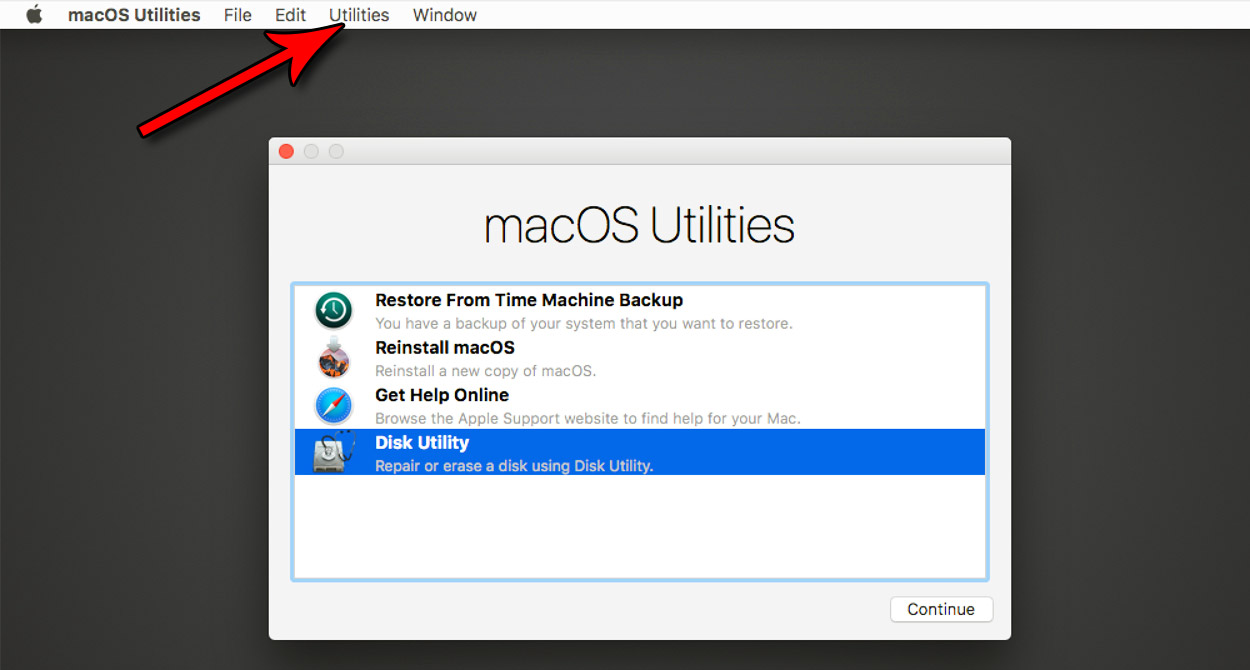
- #Mac os disk utility terminal mac os
- #Mac os disk utility terminal code
- #Mac os disk utility terminal password
- #Mac os disk utility terminal free
If you used Disk Utility from macOS Recovery, you can now restart your Mac: choose Apple menu > Restart. The order of repair in this example was Macintosh HD - Data, then Macintosh HD, then Container disk4, then APPLE SSD. Keep moving up the list, running First Aid for each volume on the disk, then each container on the disk, then finally the disk itself.
#Mac os disk utility terminal password
#Mac os disk utility terminal mac os
Name (User Visible): Mac OS Extended (Journaled)

Read-Only Volume: Not applicable (no file system)ĭevice / Media Name: EFI System Partition
#Mac os disk utility terminal free
Volume Free Space: Not applicable (no file system) Volume Name: Not applicable (no file system)Ĭontent (IOContent): GUID_partition_scheme $ diskutil info /dev/disk0ĭevice / Media Name: ST4000DX001-1CE168 Media
#Mac os disk utility terminal code
Number Start (sector) End (sector) Size Code Nameġ 40 409639 200.0 MiB EF00 EFI System Partitionĭiskutil can be ised to get more information on the whole disk0 and its subsequent partitions disk0s1 and disk0s2.

Total free space is 1389645 sectors (678.5 MiB) Here Ill show you how you can erase and format a disk using the command line. To do that, the only thing you need is a bit of precise syntax to make sure that you are erasing the proper disk. But some Mac users might need to erase them from the command line on Mac OS. Partitions will be aligned on 8-sector boundaries Most users use Disk Utility to erase a disk or hard drive. Warning: Devices opened with shared lock will not have theirįound valid GPT with protective MBR using GPT.ĭisk /dev/disk0: 7814037168 sectors, 3.6 TiBĭisk identifier (GUID): 5782184C-C4EA-47D2-9039-F1564F7735F3įirst usable sector is 34, last usable sector is 7814037134 Gdisk is a program for several operation systems that minipulates GUID partition tables (like gpt, but not just OS X). Gpt is the OS X program specialized for GUID partition tables (in contrast to MBR) $ sudo gpt -r show disk0Ĥ0 409600 1 GPT part - C12A7328-F81F-11D2-BA4B-00A0C93EC93BĤ09640 7812237856 2 GPT part - 48465300-0000-11AA-AA11-00306543ECACįdisk is a program for several operating systems that manipulates master boot record partitioning tables. However, if your Mac doesn't start up all the way, or you want to repair the disk your Mac starts up from, open Disk Utility from macOS Recovery: Apple silicon : Turn on your Mac and continue to press and hold the power button.

fdisk /dev/disk0 (make/change partitioning with MBR).diskutil info /dev/disk0 (disk0s1 etc.).


 0 kommentar(er)
0 kommentar(er)
